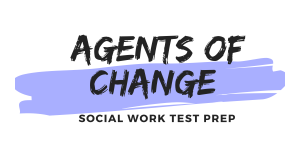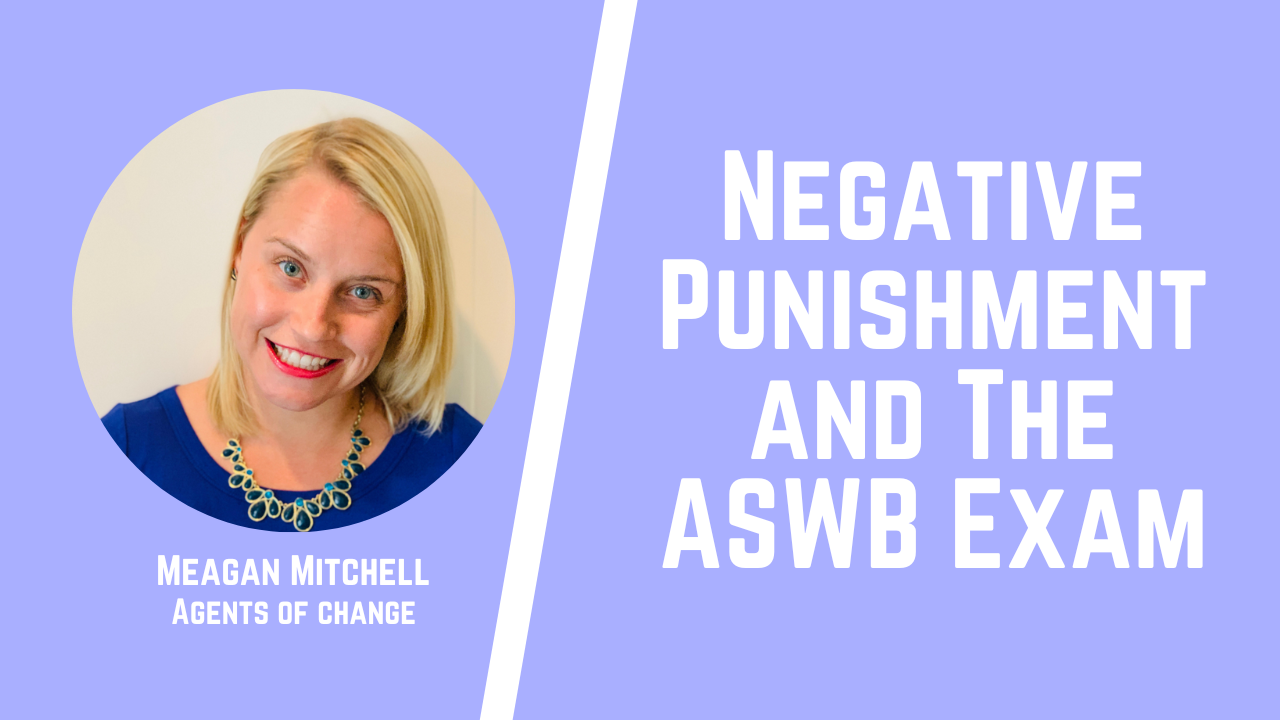Tackling the Associate of Social Work Boards (ASWB) exam is no small feat, and as you’ve probably figured out by now. But hey, don’t let that worry you! We’re here to break down one of the concepts you’ll need to ace this exam: Negative Punishment.
1) Understanding Negative Punishment
Imagine you’re babysitting your neighbor’s notoriously naughty kids. They’re wreaking havoc, right, left, and center. You warn them that if they continue their mischief, they’ll lose their precious video game time.
This is an example of negative punishment. It means taking away a desired stimulus (video game time) to decrease an unwanted behavior (poor behavior).
Distinguishing Negative Punishment from Other Types
Negative punishment is often mistaken for its twin, positive punishment. Here’s a quick breakdown to help distinguish them:
- Negative Punishment: Taking away a desirable stimulus to decrease an unwanted behavior.
- Positive Punishment: Adding an undesirable stimulus to decrease an unwanted behavior.
Imagine the naughty kids again. If, instead of taking away their video game time, you gave them additional chores (not the most fun thing in the world, right?), that would be an example of positive punishment.
Examples of Negative Punishment in Social Work Practice
Here are some examples of how negative punishment might show up in Social Work practice:
- A teenager is consistently disrespectful during family therapy sessions. The Social Worker responds by limiting his participation in a group activity he enjoys.
- A client continually fails to attend scheduled appointments. As a result, the Social Worker discontinues the client’s preferred appointment slot.
- A child regularly interrupts her peers during group play therapy. The therapist responds by temporarily excluding her from the play group.
2) Applying Negative Punishment to the ASWB Exam
Using Negative Punishment in ASWB Exam Questions
There you have it! Now that you’ve got the concept of negative punishment down, it’s time to apply it to the ASWB exam.
Consider this: a question on the exam might present a scenario where a Social Worker needs to decrease an unwanted behavior.
The answer choices may involve both adding and removing stimuli. Your job? Identify if the best approach is using negative punishment or another behavioral concept.
But remember: with great power comes great responsibility! Make sure your decision aligns with the ethical guidelines of Social Work.
Practicing with Negative Punishment ASWB Exam Questions
Practice makes perfect, doesn’t it? Here are some sample questions that can help you put the theory into action:
Scenario: A child continually disrupts group therapy by making loud noises. The Social Worker…
A) Adds extra group therapy sessions for the child.
B) Limits the child’s participation in a favorite group activity.
C) Provides the child with an individual therapy session instead.
D) Schedules the child for earlier group therapy sessions.
In this case, option B, which represents negative punishment, could be the correct answer.
3) ASWB Practice Question – Negative Punishment
Question: During a therapy session, 9-year-old Anna constantly interrupts others when they speak. The social worker wants to implement a strategy to reduce this behavior. Which of the following would be an example of negative punishment?
A) Assigning Anna additional homework each time she interrupts others.
B) Giving Anna a five-minute “time out” from the group each time she interrupts others.
C) Praising Anna each time she listens without interrupting others.
D) Giving Anna a toy each time she interrupts others to distract her.
Answer: B) Giving Anna a five-minute “time out” from the group each time she interrupts others.
Rationale: Negative punishment involves taking away a desired stimulus in order to decrease an unwanted behavior. In this scenario, Anna is removed from the group (desired stimulus) for five minutes each time she interrupts others (unwanted behavior), which is a clear example of negative punishment.
Choice A represents an example of positive punishment, where an undesired stimulus (additional homework) is added to decrease an unwanted behavior. Choice C is an example of positive reinforcement, where a positive stimulus (praise) is added to increase a desired behavior (listening without interrupting). Choice D is an example of positive punishment, where a desired stimulus (toy) is added, but it’s aimed at increasing an unwanted behavior (interrupting), which is contrary to what is desired in the scenario.
4) FAQs on Negative Punishment
Q: How effective is the use of negative punishment in Social Work?
A: When used aptly and in alignment with ethical standards, negative punishment can indeed serve as a robust tool in the field of Social Work. Nonetheless, it isn’t a magical wand that fits all situations. For maximum efficacy, it should be utilized in combination with other behavioral management techniques.
Q: Is the application of negative punishment within ethical boundaries in Social Work?
A: Absolutely, but there’s a little wrinkle! Employing negative punishment could fall within ethical parameters if its primary aim is safeguarding the client’s welfare or the well-being of others involved. That said, it’s of paramount importance to ascertain that it doesn’t inflict harm or undue discomfort to the client.
Q: Are there certain pitfalls I should be wary of when employing negative punishment in the context of the ASWB exam?
A: Absolutely! First and foremost, you must be careful not to confuse negative punishment with other forms of punishment, notably positive punishment. Beyond that, you should always make sure that your application of negative punishment adheres to ethical guidelines in the scenario being evaluated. Learn more about Negative Punishment and get access to hundreds of additional practice questions with Agents of Change.
5) Conclusion
You’ve just navigated through the winding paths of negative punishment and the ASWB exam! By now, you should have a solid understanding of this concept and how it applies to your exam preparation.
Remember, it’s not just about memorizing definitions; it’s about understanding the context and applying these concepts ethically. So hang in there, keep practicing, and you’ll be a pro in no time. Good luck, you’ve got this!
Learn more about Negative Punishment and get access to hundreds of additional practice questions with Agents of Change.
We’ve helped thousands of Social Workers pass their ASWB exams and want to help you be next!
————————————————————————————————————————————————
► Learn more about the Agents of Change course here: https://agentsofchangeprep.com
About the Instructor, Meagan Mitchell: Meagan is a Licensed Clinical Social Worker and has been providing individualized and group test prep for the ASWB for over five years. From all of this experience helping others pass their exams, she created the Agents of Change course to help you prepare for and pass the ASWB exam!
Find more from Agents of Change here:
► Facebook Group: https://www.facebook.com/groups/aswbtestprep
► Podcast: https://anchor.fm/agents-of-change-sw
#socialwork #testprep #aswb #socialworker #socialwork #socialworktest #socialworkexam #exam #socialworktestprep #socialworklicense #socialworklicensing #licsw #lmsw #lcsw #aswbexam #aswb #lcswexam #lmswexam #aswbtestprep #aswbtest #lcswtestprep #lcswtest #lmswtestprep #lmswtest #aswbcourse #learningstyles #learningstyle
Disclaimer: This content has been made available for informational and educational purposes only. This content is not intended to be a substitute for professional medical or clinical advice, diagnosis, or treatment









